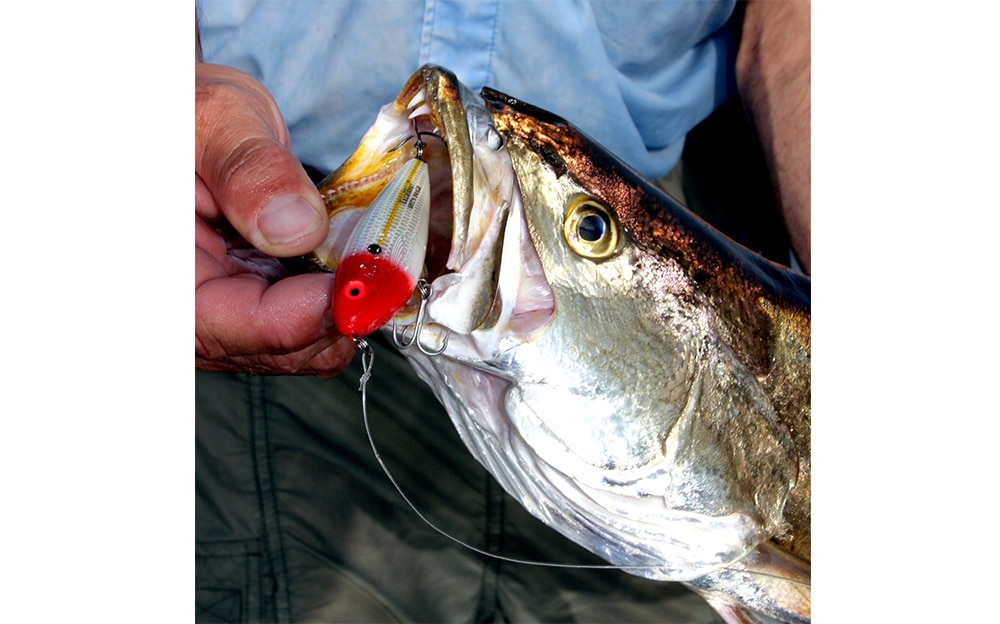
Trout fishing in southwest Louisiana and Texas really heats up at the start of summer, as giant fish migrate inshore to spawn, leaving themselves vulnerable to those who chunk plugs in key areas. The annual early summertime ritual goes off like clockwork, sending fishermen and fish, into a fishing and feeding frenzy.
Gulf Coast Seatrout Wade Fishing
For those willing to wade, the bite is bigger-and-better than for those confined to the casting deck. Local top-stick Mike Stegall: “The biggest trout are on the flats in the shallows looking for an easy snack—like menhaden, mullet and ladyfish.” The Port Neches, Texas, angler has been racking up heavy stringers at his hotspots on Big Lake and Sabine Lake. However, he explains, similar action can be found in Galveston, Baffin, Trinity, and Matagorda bays.
Stegall concentrates on sand and mud bars, and the low lying guts running between them. “Finding big sows is relatively easy if you pay attention; concentrate on slick spots over shallow bars on an outgoing tide. That’s where the largest concentration of fish will be.”
Stegall uses a 6-foot, 11-inch custom rod with a Shimano Curado 200 spooled with 30-pound braid. Stegall recommends fan casting with small, incremental longitudinal changes between casts. “A matter of a few feet to the right or left can make a world of difference. These fish bunch up, holding at a certain depth or along a specific contour line; you’ve got to figure out where they’re holding.”
Stegall’s go-to baits include Corkys and MirrOlures. These short, stout plugs have been Texas/Louisiana flats staples for decades, coaxing countless thousands of fatties into landing nets.
For color, Stegall says, “They’ll eat any color you throw—as long as it’s pink.” He casts these baits on a long line, with short, choppy rod-tip pops to locate feeding fish. Once he’s found fish, he swaps out to a Rapala topwater and a quick, crisp fleeing cadence, one mimicking frenzied baitfish.









